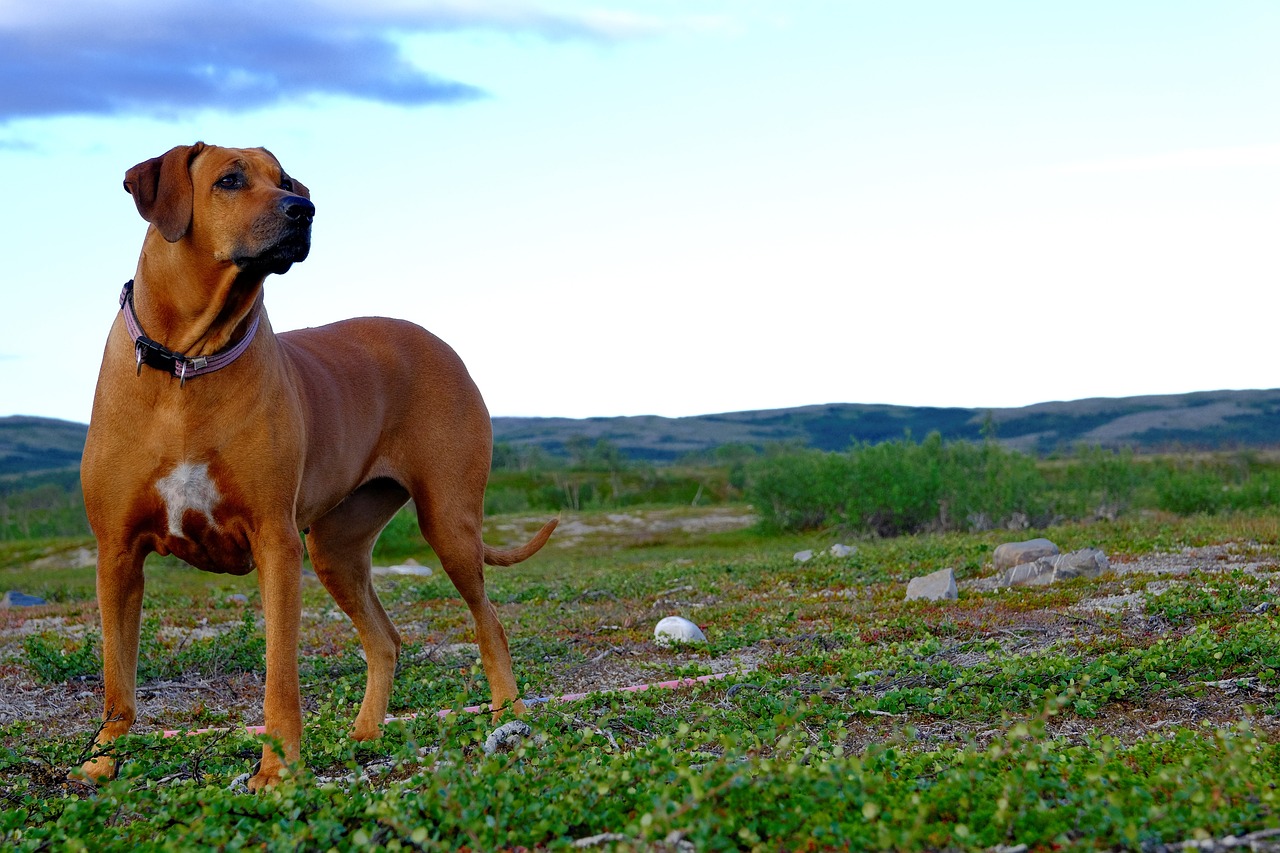The Rhodesian Ridgeback is a robust and active breed, originally bred to hunt large game in Africa. They are known for their athletic build, intelligence, and the distinctive ridge of hair along their back. This article will outline the type and amount of exercise that is optimal for maintaining the health and happiness of a Rhodesian Ridgeback.
1. Understanding the Exercise Requirements of Rhodesian Ridgebacks
Rhodesian Ridgebacks need substantial daily exercise—typically 1 to 2 hours—to cater to their high energy levels and to maintain their physical and mental well-being.
2. The Importance of Physical Exercise for Rhodesian Ridgebacks
Regular, vigorous exercise is crucial for Rhodesian Ridgebacks. It helps to keep them in shape, prevents boredom, and can reduce the likelihood of behavior problems associated with excess energy.
3. Suitable Exercise Options for Rhodesian Ridgebacks
Rhodesian Ridgebacks thrive on varied physical activities. Long walks, jogs, hikes, and play sessions in a securely fenced area can provide the physical outlet they need. They also excel in canine sports like agility and lure coursing.
4. Integrating Mental Stimulation Into Exercise Routines
Mental exercise is just as important as physical for this intelligent breed. Incorporate training exercises, hide-and-seek games, and problem-solving toys into their routine to keep their mind sharp.
5. The Significance of Socialization in Exercise
While Rhodesian Ridgebacks can be independent, they also benefit from socialization. Group walks, dog park visits, and playdates can be excellent ways to socialize them while also providing exercise.
6. Adapting Exercise to Different Life Stages
Exercise routines should be adjusted according to the dog’s age. Puppies require shorter, more frequent periods of exercise, while adults need longer, more intense sessions. Senior dogs benefit from regular, gentle exercise to maintain their mobility and health.
7. The Role of Play in a Rhodesian Ridgeback’s Exercise Plan
Incorporating play into the exercise regimen can be beneficial. Engage in games that allow them to run and chase, such as fetch with durable toys or frisbees, which are suited to their hunting instincts.
8. Managing Exercise in Extreme Weather Conditions
Due to their short coats, Rhodesian Ridgebacks can handle heat relatively well but still need protection from extreme temperatures. In hot climates, exercise should be done during cooler times of the day to avoid overheating.
9. Recognizing the Signs of Adequate Exercise
A Rhodesian Ridgeback that is receiving adequate exercise will display a balanced temperament, have a healthy appetite, sleep soundly, and maintain a healthy weight. Insufficient exercise can lead to destructive behaviors or restlessness.
10. Regular Health Evaluations and Tailored Exercise
It’s essential to monitor your Rhodesian Ridgeback’s health and adjust their exercise routine as needed. Consult with a veterinarian to ensure their activities are appropriate for their health status, particularly as they age.
Conclusion
Rhodesian Ridgebacks are athletic dogs that require a significant amount of exercise to thrive. A well-structured exercise program that combines physical activities, mental challenges, and social interactions will ensure the health and happiness of your Ridgeback. Always consider the individual needs of your dog and consult with a veterinarian when designing an exercise regimen.
Frequently Asked Questions About Exercising A Rhodesian Ridgeback
1. How much exercise does a Rhodesian Ridgeback need?
A Rhodesian Ridgeback needs considerable exercise, typically 1 to 2 hours daily, due to their high energy levels and endurance. This should include activities that engage them both physically and mentally, such as long walks, runs, and playtime.
2. What type of exercise is best for a Rhodesian Ridgeback?
Rhodesian Ridgebacks thrive on varied exercise including running, hiking, playing fetch, and engaging in dog sports like agility or tracking. They also benefit from interactive activities that challenge their intellect, such as advanced obedience training or puzzle toys.
3. Are Rhodesian Ridgebacks good companions for long-distance running?
Yes, Rhodesian Ridgebacks are excellent companions for long-distance running as they have the stamina and build for endurance activities. However, it’s important to build up their distance gradually and ensure they are well-hydrated and checked for paw injuries after runs.
4. Can Rhodesian Ridgebacks participate in agility training?
Rhodesian Ridgebacks can participate in agility training. They are agile and learn quickly, making agility a good way to provide physical exercise and mental stimulation, as well as strengthen the bond between dog and owner.
5. How do I ensure my Rhodesian Ridgeback gets enough mental stimulation during exercise?
Incorporate training sessions into your Rhodesian Ridgeback’s exercise routine, use scent work games that cater to their tracking instincts, and offer puzzle toys that challenge them to solve problems for rewards.
6. How can I safely exercise my Rhodesian Ridgeback in hot weather?
Exercise your Rhodesian Ridgeback in the early morning or late evening when temperatures are cooler. Always provide plenty of water, avoid hot surfaces, and watch for signs of overheating, such as excessive panting or reluctance to move.
7. Do Rhodesian Ridgebacks enjoy swimming?
Many Rhodesian Ridgebacks enjoy swimming, which is a great way to cool off and get exercise without stressing their joints. Always supervise them around water and introduce them to swimming gradually if they are inexperienced.
8. What are signs of over-exercising a Rhodesian Ridgeback?
Signs of over-exercising include excessive panting that doesn’t resolve quickly, lethargy, and a decrease in enthusiasm for exercise. If your Ridgeback shows these signs, reduce the exercise intensity and consult a veterinarian.
9. What indoor exercises can I do with my Rhodesian Ridgeback?
Indoor exercises for a Rhodesian Ridgeback could include hide and seek, indoor fetch with a soft toy, and tug-of-war. You can also practice obedience drills or set up a small indoor agility course.
10. How should I adjust exercise routines for a senior Rhodesian Ridgeback?
Senior Rhodesian Ridgebacks still need regular exercise but at a lower intensity. Opt for shorter, gentler walks and light play sessions that don’t overtax their joints, and continue with mental stimulation exercises to keep their mind active.

 Toledo, United States.
Toledo, United States.